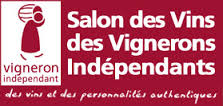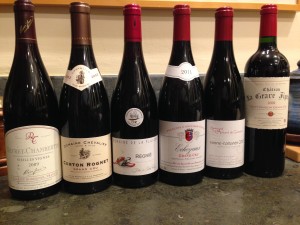(Text and photo by David Burns)
The answer, for many, is the upcoming Salon des Vins des Vignerons Indépendants. The 2017 dates are November 3-December 4 at the Porte de Versailles Exhibition Hall.
This marché du vin is impressive for its physical size as well as its variety of French wines. In 2013, over 1,000 proprietors brought more than 5,000 wines from all over France! And the cost is small: 6€ buys a day pass and a tasting glass with no taste limits.
The proprietors or their winemakers are thrilled to talk about their wines, winemaking techniques, vineyards and management methods. Even if you speak only English, they will work to communicate with you and often ask their neighbor to translate.
My first significant Salon des Vins experience was in 2013. I knew that simply showing up and tasting would be unsatisfying, so I made a simple plan and gathered some support materials.
The Plan:
1. Write down my wine tastes. By this I mean fruity, robust, light, slightly tart, sweet, and so on. If you have time, you can explore your wine palate at Vinocasting. Le test is a method created by a team of oenologists, wine lovers and novices. Taking their course will give you a good idea of French wines you might like.
2. Research the different wine regions and the wines offered in each region. The wine map from About-France.com contains information about the major characteristics of each wine region. And what would we do without “… For Dummies” books? Their reference material for grapes grown by region is indispensable– especially at the end of each tasting day.
3. Take a French wine glossary. The proprietors appreciate your enthusiasm and your ability to communicate precisely what you want to know. Many times I asked my question in English and French (very rudimentary!). The wine-tasting term translation enabled me to better understand many interesting facts about the vignerons and their wines.
4. Set aside different days for different wine regions. I planned this approach to reduce the challenge of the number of wines to taste. Plus, I found that talking to several vignerons in the same region gave me hints about how their wines acquired their taste – an interesting unintended consequence!
The Support Materials:
1. A notebook for documenting my taste experience
2. A necklace purchased at the Salon to carry my tasting glass while writing notes (2€)
3. A baguette in my coat pocket to clear my palate between tastings
4. A shoulder bag to enable me to carry three wine bottles comfortably and four with a little more effort
5. WineSkins® to transport my treasures back to the United States. If you forget to purchase WineSkins® before your arrival to Paris, then you might find them at La Grande Épicerie at the Bon Marché department store. (10€ for 3)
The 2013 “find”was Château La Grave Figeac, a Saint-Emilion wine from the Bordeaux region (far right bottle). The vineyards are next door to one of the most famous Bordeaux houses, Cheval Blanc. Each wine in the MiniCave was interesting in its own right (note the 2 Grand Crus).
One last word about taste, “How to Taste: A Guide to Enjoying Wine”by Jancis Robinson provides an easy-to-understand approach that educates the reader about the basic wine flavors – acid, sweet, tannin and alcohol. It is my taste bible.
Should you join me at the Salon des Vins this December, you will see me seeking wine treasures in Alsace, Champagne, la rive droite de Bordeaux and, of course, Burgundy. Grand Crus for 40€ – you bet!
Bon degustation!
David Burns found his passion for wine by accident. Eight years ago he was asked to assist a friend pick Colombard grapes and make a light, white wine. This simple request led to an evolving exploration of wine – its taste, its production and the vignerons who delight our palates. It is a journey without end.
Related Post:
An American Thanksgiving in Paris


